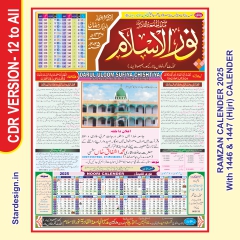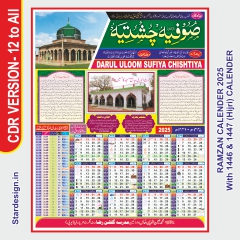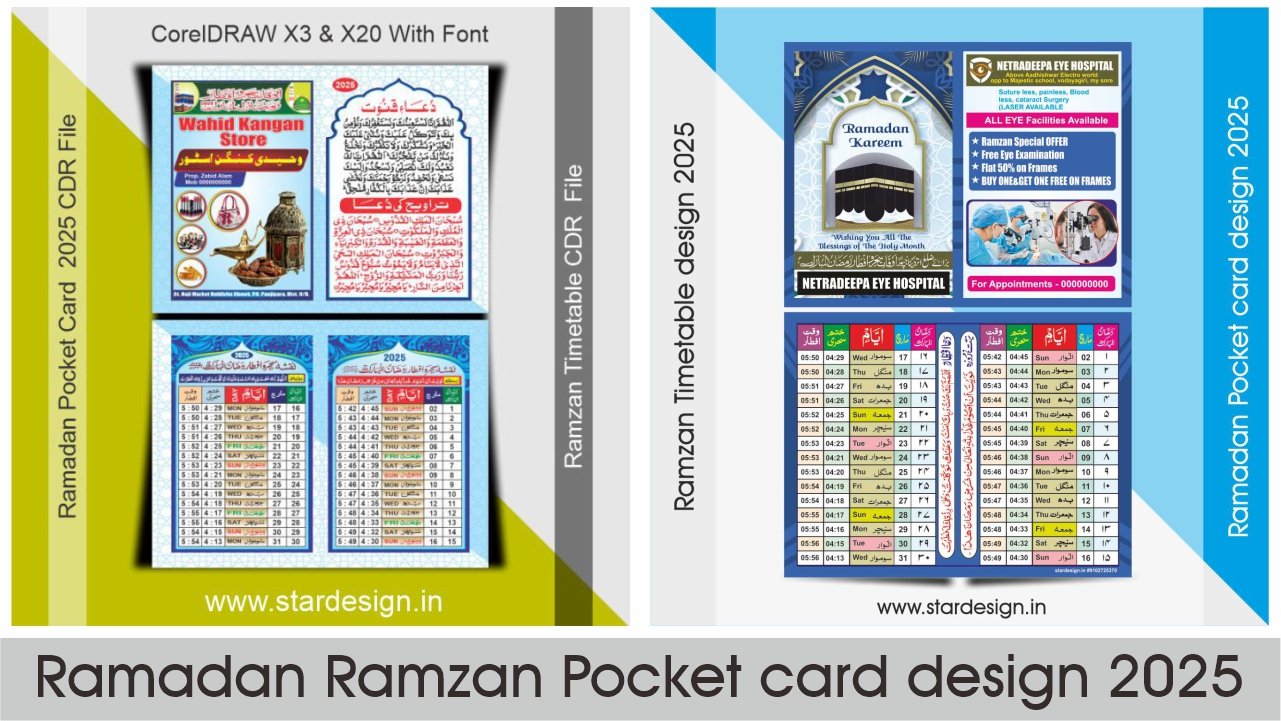Introduction to Ramadan and its Significance
Ramadan, the ninth month of the Islamic lunar calendar, holds immense significance for Muslims around the world. It is a time dedicated to fasting, prayer, reflection, and community. The observance of Ramadan is one of the Five Pillars of Islam, which are foundational acts of worship that define a Muslim’s faith and practice. During this holy month, Muslims fast from dawn until sunset, refraining from food, drink, and other physical needs, as a means of cultivating self-discipline, empathy for the less fortunate, and spiritual growth.
Observing Ramadan is not only a physical exercise in restraint but also a profound spiritual journey. Fasting serves as a reminder of the importance of gratitude, compassion, and community support. From pre-dawn meals (Suhoor) to the evening Iftar, when the fast is broken, the entire month is infused with a sense of connectedness among family and friends. It presents an opportunity for communal meals, prayer gatherings, and increased interaction with local communities, ultimately reinforcing bonds and fostering a spirit of togetherness that is central to Islam.
Moreover, Ramadan is a significant time for charitable giving (Zakat) and acts of kindness. Muslims are encouraged to provide for those in need, exemplifying generosity and solidarity with the marginalized. This emphasis on charity not only underscores the community spirit but also highlights the moral imperative of supporting one another during challenging times. Such acts are believed to multiply in reward during Ramadan, making the holy month particularly vital for personal and collective spiritual accumulation.
As Ramadan unfolds each year, millions of Muslims across the globe come together to engage in these practices, reflecting the shared values and common bonds that define the Islamic faith. The month thus serves as a vital period of renewal, introspection, and formation of stronger communal ties, making it an integral part of a Muslim’s life and identity.
The Purpose of a Ramadan Calendar
The Ramadan calendar serves a multifaceted purpose for individuals observing this significant Islamic month. Primarily, it is a tool for tracking daily fasting schedules, allowing practitioners to adhere closely to the principles of Ramadan. Each day of the holy month presents a unique opportunity for spiritual growth and reflection, making it essential to remain aware of the prayer times and fasting guidelines associated with that day.
Fasting during Ramadan is not merely an act of abstaining from food and drink; it is a comprehensive journey of self-discipline, empathy, and communal solidarity. A Ramadan calendar helps individuals stay organized by clearly marking the Suhoor (pre-dawn meal) and Iftar (meal to break the fast) times. By accurately monitoring these times, individuals can fulfill their fasting obligations more effectively, thereby enhancing the spiritual experience linked to the month.
Elements of a Unique Ramadan Calendar Design
Creating a unique Ramadan calendar design requires careful consideration of various elements that encapsulate the spirit of the holy month. One of the most significant components is the color scheme. Traditional colors associated with Ramadan include rich golds, deep blues, and vibrant greens, which evoke feelings of spirituality and celebration. Designers often choose these colors not only for their aesthetic appeal but also for their cultural significance. Incorporating these hues can turn a simple calendar into a meaningful representation of Ramadan.
Typography is another critical factor in the design of a Ramadan calendar. The fonts selected should reflect the cultural essence of the month while ensuring readability. Options such as elegant script fonts or clean sans-serif typefaces can be effectively combined to create an engaging visual hierarchy. The text should be clear and inviting, as it plays a vital role in conveying messages related to Ramadan traditions, prayers, or daily reflections.
Illustration styles chosen for the calendar also contribute substantially to its uniqueness. Hand-drawn illustrations, for instance, bring a personal touch and warmth, while digital illustrations might offer a contemporary feel. Both approaches can be effectively utilized to depict significant elements associated with Ramadan, such as lanterns, mosques, and crescent moons. Thematic visuals not only enhance the aesthetic value but also serve as a reminder of the customs and beliefs that are cherished during this time.
Lastly, thematic visuals integrated throughout the calendar elevate its overall design. Each day can feature imagery or design elements that resonate with various aspects of Ramadan, fostering a deeper connection for those who use the calendar. By thoughtfully combining these design components—color schemes, typography, illustration styles, and thematic visuals—a unique Ramadan calendar can be crafted that is both beautiful and meaningful, enhancing the experience of this sacred month.
Incorporating Cultural Influences in Calendar Design
When designing a Ramadan calendar, integrating cultural influences can significantly enhance its aesthetic and thematic appeal. Acknowledging the rich traditions from various regions such as the Middle East, South Asia, and Africa allows for a diverse and celebratory representation of Ramadan. Each culture offers unique artistic styles, symbols, and customs that can inform and enrich the calendar’s design.
Middle Eastern art is characterized by intricate geometric patterns and calligraphy. These elements can be incorporated into the calendar design through detailed motifs that not only celebrate the holy month but also reflect the spiritual significance of the Arabic script. For example, using verses from the Quran, complemented by beautiful typography and ornate decorative borders, can create a visually striking layout. Many artists emphasize symmetry and balance, drawing on these principles to arrange the calendar’s design elements harmoniously.
South Asian influences, particularly from countries like Pakistan and India, often celebrate vibrant colors and festive imagery. Traditional textiles, like block prints and bandhani, can inspire the color palette and patterning of the calendar. Additionally, incorporating cultural symbols like the crescent moon, stars, or the diya (oil lamp) can create a charming visual narrative that resonates with the essence of Ramadan.
African art, with its rich textures and bold colors, can also provide inspiration. The use of earthy tones combined with symbolic representations of community and unity can emphasize the communal aspects of Ramadan. Drawing from indigenous art styles, such as those found in African textiles, can further enhance the calendar’s appeal while showcasing the beauty of different cultures coming together to observe this sacred month.
In summary, by merging various cultural influences into Ramadan calendar design, creators can foster a sense of global celebration and inclusivity, making the calendar not just a tool to mark the days, but a celebration of the diversity and unity within the Muslim community worldwide.
Practical Tips for Designing Your Ramadan Calendar
Designing a Ramadan calendar can be an engaging and fulfilling project that enhances the atmosphere of this sacred month. To facilitate individual creativity while ensuring a functional end product, several practical tips can help in the design process. First, consider using accessible design tools such as Canva, Adobe Spark, or even simple applications like Microsoft Word, which offer templates and user-friendly interfaces. These platforms allow for the easy integration of various design elements that can enhance the aesthetics of your Ramadan calendar.
When it comes to aesthetic choices, selecting a color palette that aligns with the spirit of Ramadan is crucial. Soft tones such as pastels or muted golds can evoke a sense of calm and celebration. Additionally, incorporating traditional motifs, such as crescent moons or stars, can add a cultural touch. Balancing these aesthetic elements with practical features is vital. Ensure that the calendar is readable and user-friendly, with clear marking of important dates and activities.
Functionality should not be overlooked; ensuring that there is ample space for writing notes or reminders can enhance its usability. A well-organized layout will make it easier for individuals and families to keep track of special prayers, fasting days, and charitable activities during Ramadan. Incorporating sections or boxes for daily reflections or goals can make the calendar not only decorative but also meaningful.
Incorporating digital elements such as QR codes linked to prayer guides or community events can also modernize your calendar while making it interactive. This dual approach of blending design with functionality will help in creating a Ramadan calendar that is both appealing and effective in serving its purpose, ultimately enriching the observance of this special month.
Unique Themes for Your Ramadan Calendar
Designing a Ramadan calendar offers a splendid opportunity to express creativity while embracing the spirit of this holy month. A unique theme can elevate the experience, making it more engaging and meaningful. One captivating theme is nature-inspired designs. These calendars can incorporate elements such as trees, flowers, and the moon, reminding individuals of the beauty of creation and the tranquility it brings during Ramadan. This theme emphasizes gratitude for the blessings bestowed upon us and aligns well with the principles of reflection inherent in this season.
Another popular theme is minimalist art. In our fast-paced world, simplicity can serve as a powerful reminder to focus on what truly matters. A minimalist Ramadan calendar might feature clean lines, muted colors, and a straightforward layout that encourages mindfulness. This design approach can symbolize the importance of stripping away distractions during Ramadan, allowing for deeper spiritual engagement and growth. Utilizing this theme could resonate particularly well with individuals seeking a serene and uncomplicated approach to the month.
Moreover, vibrant community celebrations can serve as a wonderful theme for a Ramadan calendar. This design can reflect the communal aspects of the month, highlighting various local traditions and festivities celebrated during Ramadan. Featuring illustrations of iftars, prayer gatherings, and acts of charity can foster a sense of belonging and unity. This theme can visually narrate a story of togetherness and support, which is integral to the essence of Ramadan. Each design element can invoke the joy and togetherness felt during this month, making it not just a calendar but a representation of community spirit.
In conclusion, choosing unique themes for a Ramadan calendar significantly enhances its impact. From nature-inspired designs to minimalist art and vibrant community celebrations, each theme offers different avenues for reflection and expression throughout this special month.
Showcasing Inspiration: Examples of Unique Calendar Designs
Ramadan calendars serve as a means to count down the days to the holy month while celebrating its spiritual significance. Various artists and designers have innovatively transformed the traditional calendar into a creative masterpiece. Below, we explore a selection of unique Ramadan calendar designs that demonstrate remarkable artistic vision and practical application.
One striking example is a calendar that employs a modular design, featuring removable elements that families can interact with daily. Each day is represented by a beautifully crafted piece of art, depicting various Islamic symbols, such as crescent moons and stars. This design not only enhances the aesthetic charm of the calendar but also engages families in daily reflection, making the experience of counting down to Ramadan both meaningful and interactive.
Another inspiring creation is a calendar with a nature-inspired theme, where each day tells a story through intricate illustrations of flora and fauna significant to the Ramadan experience. The use of vivid colors and detailed art not only beautifies the calendar but also creates a connection between the spiritual and natural worlds, inviting observers to appreciate the beauty of creation during this sacred month.
Moreover, some designers have incorporated technology into their calendar designs. An innovative digital calendar integrates augmented reality features, allowing users to scan each day to reveal inspirational Quranic verses or hadith. This blend of tradition and modernity provides a contemporary approach to experiencing Ramadan, fostering a deeper understanding of its teachings while appealing to tech-savvy individuals.
Each of these unique calendar designs showcases the versatility and creativity inherent in the celebration of Ramadan. Through innovative elements, they enhance both the beauty and functionality of the calendars, providing unforgettable experiences that deepen one’s connection to the month.
Digital vs. Print Calendars: Pros and Cons
When it comes to choosing a Ramadan calendar, users are often faced with the decision between digital and print options. Each format carries its own set of advantages and drawbacks that can significantly influence a person’s experience during this important month.
One of the primary advantages of digital Ramadan calendars is accessibility. They can be easily accessed from various devices such as smartphones, tablets, or computers. This convenience allows for immediate updates, especially important during Ramadan when prayer times can vary by location. Furthermore, digital calendars often come with customizable features. Users can set reminders for prayer times, add personal notes, and even share their calendars with family and friends, fostering a communal spirit during the holy month.
On the other hand, print calendars have their own merit. Many individuals appreciate the tactile experience of engaging with a physical calendar. A print Ramadan calendar can serve as a decorative piece, often featuring art and inspirational messages that enhance the atmosphere of spirituality within a home. Additionally, print calendars do not require electronic devices or internet connectivity, making them accessible to everyone, including those who may not be tech-savvy.
Environmental impact is another factor to consider. Digital calendars often have a lower carbon footprint once created, as they do not involve the use of paper. However, the energy consumption of digital devices can offset these benefits. Conversely, print calendars can contribute to deforestation and waste, depending on how they are produced and disposed of.
Ultimately, the choice between digital and print Ramadan calendars depends largely on personal preferences. Some individuals may prefer the seamless integration of technology in their daily routines, while others may find solace in traditional methods that provide a physical reminder of their faith. Balancing the pros and cons of each format is essential for making an informed decision that aligns with individual values and lifestyles.
Conclusion: Celebrating Ramadan through Creativity
The observance of Ramadan is a profound and reflective time for millions around the world. It is a month characterized by deep spirituality, community bonding, and personal growth, where individuals engage in fasting, prayer, and acts of charity. However, the experience of Ramadan can be enriched through creativity, especially when it comes to unique calendar designs. A thoughtfully crafted Ramadan calendar not only marks the passage of days but also serves as a visual reminder of the spiritual journey undertaken throughout the month.
Engaging in the creative process allows families and individuals to express their understanding of Ramadan in a personal and artistic manner. By designing their own calendars, they can integrate traditional motifs, personal prayers, or quotes that resonate with their beliefs and experiences. This artistic endeavor can transform a simple counting tool into a cherished symbol of faith, fostering a deeper connection to the spiritual dimensions of Ramadan.
Moreover, sharing these unique designs within the community can inspire a sense of togetherness and collective celebration. Whether through art classes, social media, or community fairs, the act of showcasing one’s personal calendar design can stimulate dialogue and exchange of ideas, making the observance of Ramadan more inclusive and joyful. The infusion of creativity into Ramadan observance cultivates a spirit of collaboration, where individuals are encouraged to not only partake in the traditions but also to innovate and share.
Ultimately, as Ramadan approaches, let us embrace our artistic talents and transform the way we experience this sacred month. A well-designed Ramadan calendar is more than just a countdown; it is an opportunity for expression, a means to connect with others, and a beautiful way to honor the values and teachings of this time. Embrace the call to creativity and make this Ramadan a uniquely personal journey for you and your loved ones.










